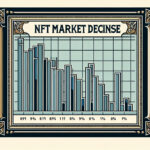Disclosure: The views and opinions expressed here belong solely to the author and do not represent the views and opinions of crypto.news’ editorial.
The Shift in Traditional Finance Towards Bitcoin and Blockchain
Traditional finance has taken a notable turn from its initial dismissive stance on Bitcoin and blockchain technology. Earlier this year, the SEC approved spot Ether and spot Bitcoin ETFs from leading asset managers, including BlackRock. Concurrently, State Street, a prominent global bank, plans to launch a stablecoin, and Robinhood has expanded its crypto operations.
Integration of TradFi and Web3
While some web3 enthusiasts are cautious about the involvement of centralized institutions in crypto, many believe that TradFi participation will accelerate adoption. The ties between traditional finance and the digital assets sector are steadily strengthening.
Challenges for Financial Institutions
Despite the interest in ETFs, DeFi, and tokenized real-world assets, many financial institutions are hesitant to engage directly with blockchain networks. This hesitation is not primarily due to SEC lawsuits or crypto’s volatility but relates to the operational nature of banks.
As trusted intermediaries managing customer assets, banks are wary of public blockchains where transaction histories and private data are transparent. This transparency, while a core principle of web3, could expose private customer information.
Financial institutions must comply with local regulatory frameworks, making engagement with public blockchains complex and limiting flexibility. Consequently, banks often opt for private blockchains to ensure privacy and compliance.
The Role of Private Blockchains
Private networks offer a controlled environment where banks can experiment securely and compliantly, allowing more partners to join over time. This approach, however, limits access to DeFi products and liquidity stored on public blockchain protocols.
Cross-chain bridges, sidechains, and layer-2 solutions exist to provide financial institutions with more exposure to crypto markets. However, these solutions may introduce security threats that private blockchains aim to avoid.
Innovative Solutions for Financial Institutions
Smaller banks, in particular, face challenges in developing robust digital asset strategies. New projects are emerging to bridge these gaps and broaden the scope of blockchain engagement for institutions.
Vixichain, for example, is developing a solution with its layer-1 blockchain set to launch early next year. This network enables institutions to interact with crypto and DeFi compliantly, using a stablecoin built with NFT technology.
Vixichain’s private blockchain allows financial institutions to act as validators, providing a secure environment for transactions. Its NFT stablecoin facilitates access to the broader crypto ecosystem while ensuring traceability and authenticity.
The Benefits of TradFi Integration
Web3 industry participants recognize the value of mainstream adoption, and strategic cooperation with TradFi offers numerous benefits, including experience with compliance, risk management, and added liquidity. Innovative solutions that balance the advantages of public and private blockchains are key to leveraging TradFi’s participation in digital asset markets.
For more news and updates, explore Global Crypto News.
#CryptoInvestor #CryptoMarket #CryptoUpdates
























